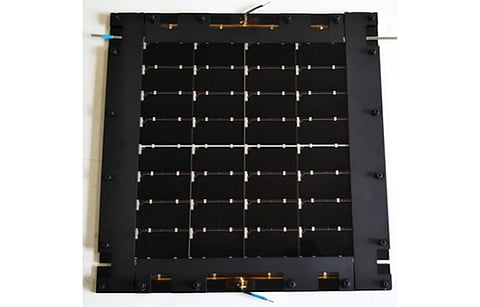

Japan's SHARP Corporation has announced achieving the world's 'highest' power conversion efficiency in a stacked solar cell module that brings together a tandem double-junction solar cell module and a silicon solar cell module.
The 33.66% efficiency reported for a practical size module of 775 cm2 area, breaks the company's own world record of 32.65% set in 2022 (see 32.65% Triple Junction Solar Module Efficiency Record).
Both projects are part of the Japanese national research and development agency New Energy and Industrial Technology Development Organization (NEDO) sponsored Research and Development Project for Mobile Solar Cells.
SHARP says the double junction structure used for 33.66% efficiency includes indium/gallium/phosphide as the top layer and gallium arsenide as the bottom layer.
It changed the new structure from the use of a compound triple-junction solar cell that stacks 3 light absorption layers with indium/gallium/arsenide as the bottom layer.
"The prototype solar cell module has achieved high efficiency by efficiently converting light of various wavelengths into energy by a new structure which has compound two-junction solar cells on the top layer and silicon solar cells on the bottom layer," explained the manufacturer. "Additionally, the thickness of the tandem double-junction solar cells can be reduced to less than one-third that of conventional triple-junction solar cells, reducing material costs."
The electronics manufacturer sees potential for this technology to be used for regular electric vehicles and mobile units and for use in the space and aviation fields.
It plans to continue further research into improving the efficiency and reducing the cost of solar PV modules. "Through this, we will contribute to reducing greenhouse gas emissions in the mobile field with the aim of achieving carbon neutrality by 2050," it added.
.png?w=50&fm=png)